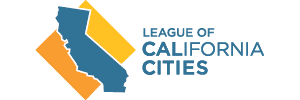Repost from the San Francisco Chronicle
[Editor: The proposed increase is to be voted on at a Thursday, 12/17/15 meeting of the California Public Utilities Commission. See agenda, p. 17 (Item #16, Adopting Pacific Gas and Electric Company’s 2016 Electric Procurement Cost Revenue Requirement Forecast. The item in question is “$118.7 million for the Power Charge Indifference Amount.” More background and an ACTION letter opportunity at ActionNetwork. More at Marin Independent Journal. – RS]
High cost of breaking away
EDITORIAL – On Alternatives to PGE
The Pacific Gas and Electric Co., California’s largest utility and a longtime regulated monopoly, insists that its application to nearly double a fee for customers defecting to local clean power plans is simply a matter of market forces.
PG&E’s many critics think otherwise.
“There’s an urgency for PG&E to stifle competition,” said state Sen. Mark Leno, D-San Francisco. “They’re protecting a monopoly.”
The suspicions are understandable. PG&E has the legal right to charge the fee, known as a Power Charge Indifference Adjustment.
It has to do with PG&E’s obligation to provide power to everyone in its service area as the utility of last resort. Should any customer’s alternate energy provider go out of business, PG&E still has to be able to provide for those customers — hence a fee.
“We have to undertake long-term forecasts about serving those customers in the event of their other service provider going out of business,” said PG&E spokesperson Nicole Liebelt. “It’s about ensuring that those customers won’t be left stranded.”
Liebelt said that PG&E’s longterm contract costs for serving customers are higher than current market costs, and that’s why the fee had to rise.
“The formula for calculating the fee hasn’t changed,” Liebelt said. “It’s the inputs that change every year.”
But the fee has never been as high as it is this year — the cost for each residential customer would nearly double, from $6.70 to $13 per month. In San Francisco, the proposed fee for residents looking to move to CleanPower SF would skyrocket by 100.26 percent.
Meanwhile, there’s never been a greater danger of Bay Area customers stranding PG&E.
CleanPowerSF, San Francisco’s city-run green energy program, launches in the spring. Peninsula Clean Energy, a community choice renewable energy program for San Mateo County, is scheduled to launch in August 2016.
And Marin Clean Energy and Sonoma Clean Power aren’t going anywhere.
But the administrators of these programs have all cried foul, saying that the big fee hikes threaten their business models.
We urge the California Public Utilities Commission to consider these arguments very carefully before they vote on a rate increase as early as next week.
Leno has urged the CPUC to do a public review of its methodology for how the fee should be calculated before voting on any increase above 15 percent.
Considering the fact that the CPUC has historically been incredibly deferential to PG&E’s concerns, Leno’s idea is worth considering. Electricity customers deserve choices, and local clean energy programs deserve the opportunity to compete on a level playing field.

